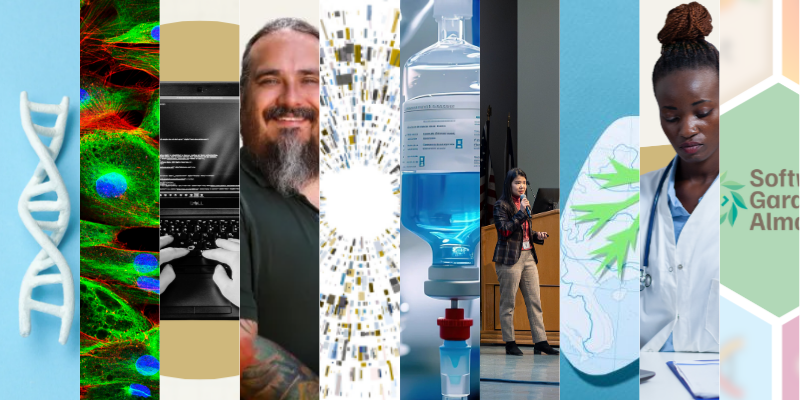At first glance, there don’t seem to be many similarities between humans and zebrafish, but the small freshwater minnows native to southeastern Asia have quickly become a favorite model organism in scientific research, allowing researchers to study human health, rare diseases, and treatment options.
“There’s a lot to love about zebrafish,” says Sabrina Toro, PhD, assistant research professor in the Department of Biomedical Informatics (DBMI) at the University of Colorado School of Medicine.
Toro, a member of the department’s TISLab, spent much of her career with zebrafish in wet labs and working for Zfin, a database that curates and houses genetic and genomic data for zebrafish. These days, the researcher is expanding her interest to many more species to compare data among many animal models and humans.
“This comparison is helpful for disease diagnosis,” Toro explains of her work with the TISLab. “It’s also good for looking at treatments. If a treatment works in an animal model, it may be applicable for humans.”
With zebrafish, there are a bevy of qualities that make the organisms favorable among many researchers, including genetic makeup, physiological features, and ease of studying baby zebrafish.
Zebrafish physiology and life cycle
One of the most important characteristics of zebrafish is that they are a vertebrate and share many of the same organs and tissues as humans.
“It's a little bit different because, of course, they live in the water and humans don't, but most all human organs can also be found in zebrafish, or you can compare homologous organs,” Toro says. “Zebrafish don’t have lungs per se, but they do have a swim bladder, which can provide information about the human lung.”
Because zebrafish have a vertebral column, just as humans do, and share about 70% of the same genes with humans, they are an excellent model organism for diseases such as muscular dystrophy, a group of genetic diseases that cause weakness of the muscles.
The combination of similar genetic makeup and physiological attributes means that zebrafish exhibit similar biological pathways, making them model organisms in many instances.
“The pathways and way the proteins work together are similar in human and in zebrafish,” Toro explains. “Therefore, making a change in a gene or a protein in zebrafish informs us about the consequences of the changes in the corresponding human gene or protein.”
Other features are their optical clarity during the embryonic stage and rapid development. This is a major perk, Toro says.
“Because of the transparency and the rapid development of the embryos, you can see what is happening at the cellular level,” she says. “This can be observed in real time in a live fish, which is very beneficial.”
Caring for zebrafish is simpler and also inexpensive compared to many other animal models – both attractive attributes.
A place in translational research
Even outside of a wet lab, researchers like Toro are finding ways to utilize zebrafish. Because scientists have fully sequenced zebrafish — and their genetic makeup is so similar to humans — it’s possible to study genetic mutations that cause disease.
As a biocurator, Toro works with data, making it available for analysis and further research.
“My work helps get information from different species together in a centralized place that allows us to compare through both genetics and phenotypes,” Toro says. “This is important because a phenotype could be due to genetics, but it can also be caused by other factors like the environment. Our team uses the data that is generated in research labs and creates tools, using that data in a more global way.”
Even with so much known about zebrafish — which was only discovered to be such a good model organism within the last 50 years — there’s still a lot to learn, too.
“We find new diseases and genetics changes in humans every day” Toro says. “Zebrafish can be key in unlocking new advancements and treatments.”




.png)